SDI Stela – Technical Information
A Stronger Bond Without Gaps
Study: No Interface Gaps
An external study demonstrated Stela’s high bond strength to dentine. Micrograph imagery showed interfaces without defects or gaps. The study noted that “Filtek One Bulk-Fill presented the lowest results, with resin dentine interfaces characterised by gaps and porosities.” In contrast, Stela “…exhibited better interfacial adaptation and greater bonding performance compared to universal and bulk-fill composites.”
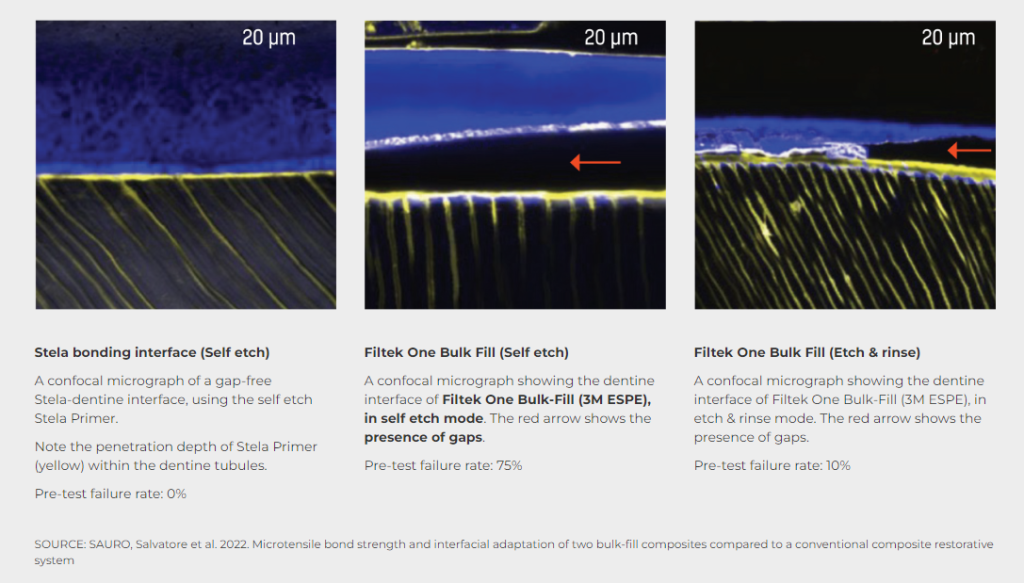
Standard etch-prime-bond-cure combinations are time-consuming and technique sensitive, introducing the potential for contamination and errors, leading to sensitivity and premature failure.
The Stela Primer was developed in tandem with Stela Capsule and Stela Automix syringe. Together, the formulations combinate to deliver an increased bond strength compared to standard etch-prime-bond products~.
Both Stela Primer and Stela composite have the MDP monomer, ensuring a strong chemical bond, free of gaps, with better sealing for durability and no sensitivity.
Stela Primer tags into the dentinal tubules, forming micromechanical retentions (secondary bond).
Stela Primer then chemically bonds to Stela paste (primary bond), forming a true adhesion between atoms or molecules of Primer and composite.
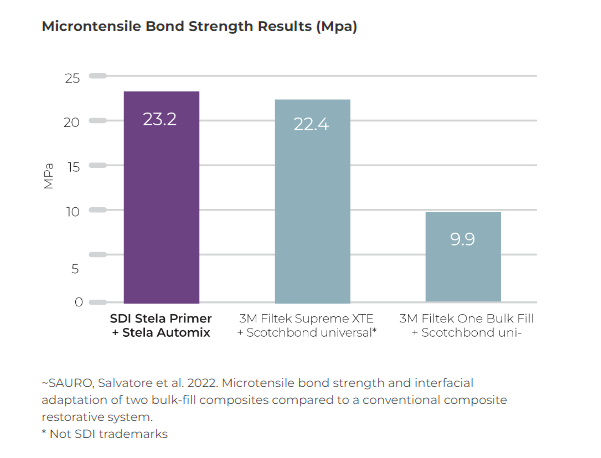
Gap-Free Interface
Stela cures from the margins, not from the LED curing light
Light cure composite polymerisation begins in the area closest to the light source, before progressing deeper into the restoration.1, 3 The resulting polymerisation shrinkage pulls the restorative from the cavity walls and creates micro gaps.2
These gaps can frequently cause post-operative sensitivity, marginal leakage with staining, and recurrent caries.1, 2, 3</sup
Stela’s self-cure polymerisation begins from the applied Stela Primer on the cavity walls, as the primer contains a catalyst. This polymerisation sequence microscopically pulls the restorative towards the cavity – and not away from it, providing you with gap-free restorations every time reducing the risk of sensitivity and premature failure.
- Hamdi Hosni Hamama. Recent advances in posterior resin composite restorations in Applications of Nanocomposite Materials in Dentistry, 2019.
- S.R. Schricker. Composite resin polymerization and relevant parameters in Orthodontic Applications of Biomaterials, 2017.
- Gary S. Berkowitz et al. Postoperative Hypersensitivity and Its Relationship to Preparation Variables in Class I Resin-Based Composite Restorations: Findings from the Practitioners Engaged in Applied Research and Learning (PEARL) Network. Part 1. Compend Contin Educ Dent. 2013 Mar; 34(3): e44–e52.
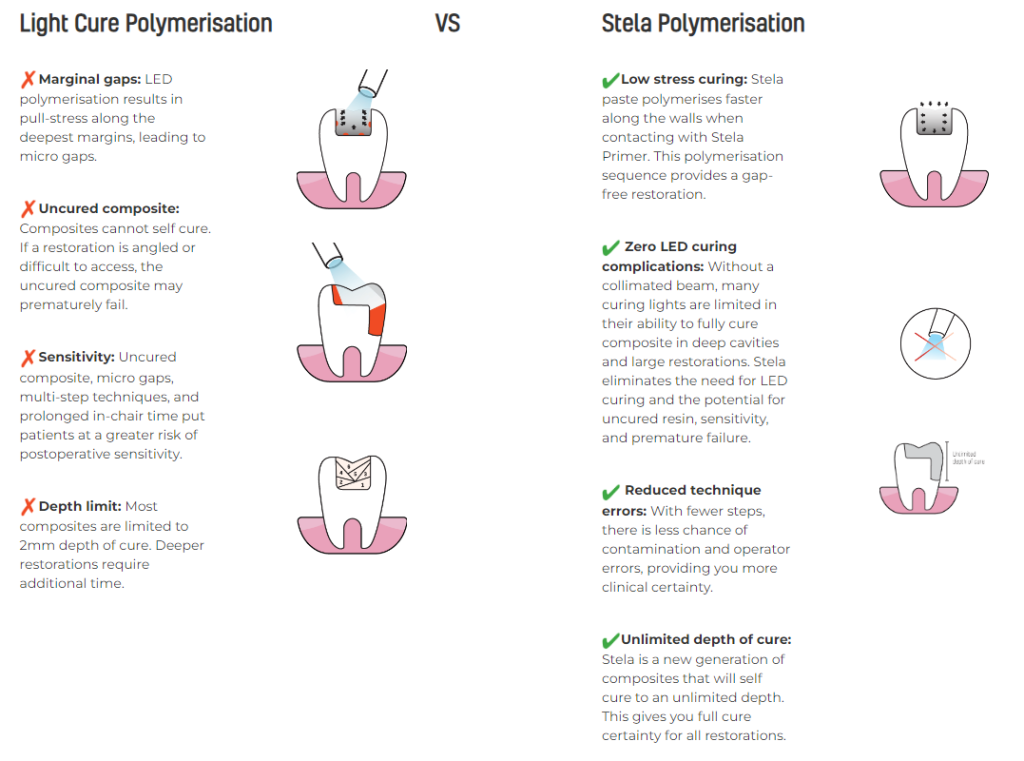
The Stronger Restorative
Stronger The Composites
The strength of a restorative should always be judged on its combination of compressive and flexural properties, to resist occlusal forces and to prevent fractures during function.
Stela has the perfect balance of two strengths, outperforming most other composite products.
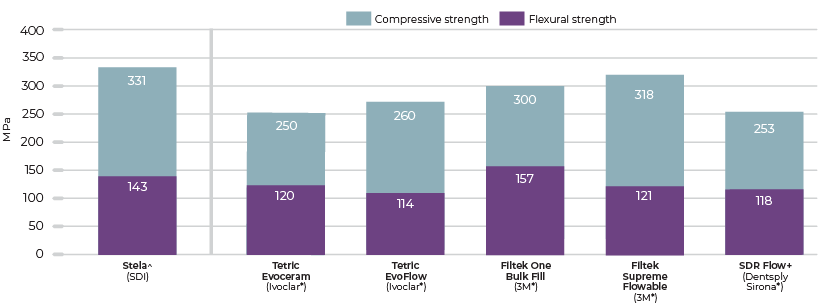
Source: Manufacturers brochures for non-SDI products and SDI Research & Development Department for Stela. *Not a registered trademark of SDI. ^ Stela Automix
Best In Class
Stela is the strongest self cure composite available.
There are several posterior restoratives. However, when comparing their strength, many have weaker properties that are closer to glass ionomers than composites.
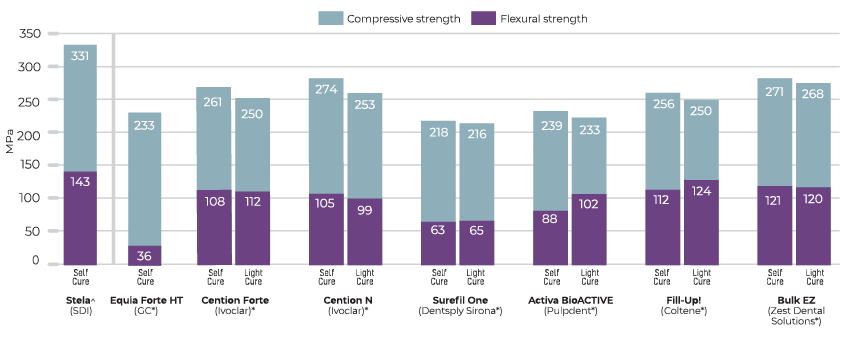
Source: SDI Research & Development Department ^ Stela Automix
Faster, Simpler Restorations
Unlimited Bulk Fill With Certainty
Composite restorations fail for a variety of reasons, including uncured material in deep areas, which may cause sensitivity. Stela will self-cure at all depths, thereby eliminating any curing uncertainty.
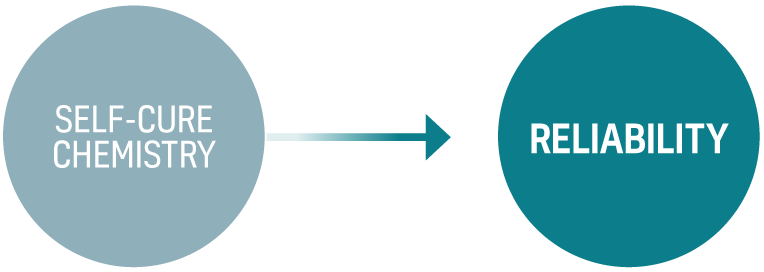
No Tertiary Amine For Improved Colour Stability
Most self cure composites contain tertiary amine. This additive can contribute to long term shade darkening and the yellowing of restorations.1,2 Tertiary amine can also reduce the longevity of adhesion to dentine as the composite restoration ages.2
Stela has been formulated without tertiary amine. This provides you improved long term aesthetic stability while maintaining bond strength.
1.Andrea Kowalska et al. The Photoinitiators Used in Resin Based Dental Composite – A Review and Future Perspectives, 2021.
2 Andrea Kowalska et al. Can TPO as Photoinitiator Replace “Golden Mean” Camphorquinone and Tertiary Amines in Dental Composites?, 2022.
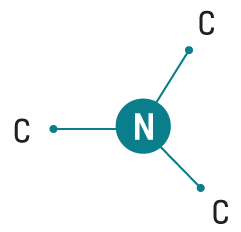
Superior Handling
Stela offers two handling options, both of which have been formulated to give you outstanding control compared to other leading restoratives.
Stela Automix syringe includes rotating and bendable metal tips. This allows precise extrusion in the most hard-to-access places.
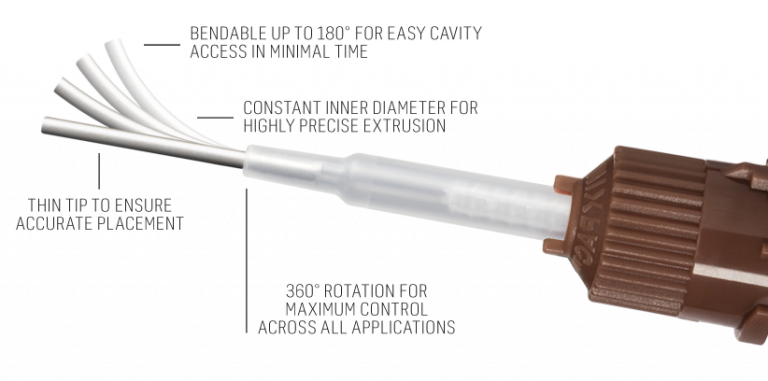
Viscosity Test

Fluoride, Calcium & Strontium
Stela contains fluoride, calcium and strontium for enhanced biomimetic and bioactive properties, adding an extra layer of protection during acid challenge.
SDI Stela Product Options
For more information about SDI Stela, click here.

